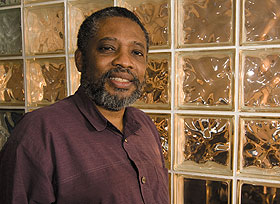  |
| HOME | THIS ISSUE | CALENDAR | GRANTS | BACK ISSUES | < BACK | NEXT > |
On-street parking can revitalize downtowns, researchers sayby Michael Kirk - February 23, 2009
|
||||
| A UConn engineering professor and his graduate students have received a national award for their paper on the role on-street parking can play in helping to revitalize downtowns and conserve land. Norman Garrick, an associate professor of civil and environmental engineering, Ph.D. candidate Wesley Marshall, and graduate student Gilbert Hansen were recognized by the Washington, D.C.-based Transportation Research Board for an outstanding paper in policy and organization. The paper suggests that downtowns with on-street parking are more vibrant, safer, more pedestrian-friendly, and use land more efficiently than those without it. The three looked at West Hartford Center, Northampton, Mass., and Brattleboro, Vt. – which all feature on-street parking within the downtown area – and compared them to the downtowns of Avon Center, Glastonbury Center, and Somerset Square in Glastonbury, which do not. “We found that on-street parking plays a crucial role in benefiting activity centers,” says Garrick. “On-street parking is more convenient, uses less space, slows traffic down so it’s safer for pedestrians, and helps create an atmosphere that encourages more walking, biking, and use of public transportation. “This is a lesson for Hartford, Norwich, and other U.S. cities that are in the midst of downtown redevelopments, and are seeking to move away from projects that feature vast parking areas that waste valuable land, create dead zones, and discourage foot and bike traffic,” he adds.
Parking in a surface lot typically uses considerably more square feet per space than on-street parking. The researchers estimated that if an average town center with approximately 2,000 spaces were to provide 15 percent of its parking curbside instead of off-street, it would save more than 2.3 acres of land. Even during the busy holiday season, according to Garrick, off-street parking in the areas studied reaches only 59 percent of capacity, while on-street parking is at 95 percent. Garrick says nearly every town in the state has street space available that could be reallocated toward on-street parking, enabling some of the land that is currently used for inefficient off-street parking lots to be re-used. Garrick and Marshall authored a related study two years ago showing that even mixed-use places like West Hartford provide far more parking than is needed, even during the holiday season. They suggested that the land in these areas could be used more efficiently. |
| ADVANCE HOME UCONN HOME |

